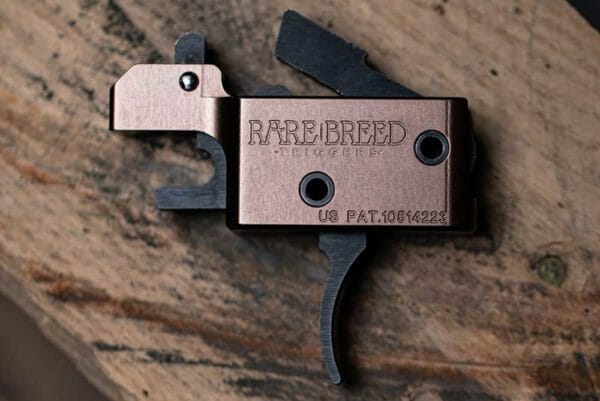
ORLANDO, FL –-(Ammoland.com)- The Bureau of Alcohol, Tobacco, Firearms and Explosives (ATF) filed the criminal examination of the Rare Breed FRT-15 trigger in District Court today.
The Rare Breed FRT-15 is a forced reset trigger. The shooter must pull the trigger with each shot. Because of this, the company claims a firearm with the FRT-15 trigger is still a semiautomatic firearm. The drop-in trigger forces the trigger to be reset. The force reset dramatically speeds up the rate of fire of a gun. Rare Breed claims its trigger is similar to the 3MRC TAC Con trigger, which has an ATF approval letter. Still, the company does not have an approval letter for the FRT-15 from the ATF’s Firearms and Ammunition Technology Division (FATD).
The company has been selling the trigger by the thousands for months. The ATF took noticed and acquired the trigger to examine because the agency was concerned it was a machine gun. If a part turns a firearm into a machine gun, the ATF considers the item to be a machine gun itself. Lighting Links and Drop-In Auto Sears (DIAS) must be serialized because of the ATF’s determination that they are machine guns. The ATF ruled that bump stocks are machine guns, although Gun Owners of America (GOA) has successfully pushed back against this determination.
The Firearms Enforcement Officer (FEO) wields enormous power over the firearms industry. Special Agent Michael Nuttal sent the Rare Breed FRT-15 to FATD’s Firearms Technology Industry Services Branch (FTISB) to be examined in early June of this year. FEO David Smith was assigned the case. FTISB is the branch within FATD that determines if a gun is a machine gun or semiautomatic and issues letters to companies.
The FEO notes that the patent for the FRT-15 states that the device “causes the trigger to be forcibly reset,” and “once reset, movement of the trigger is blocked by a locking bar and cannot be pulled until the bolt has returned to battery, thus preventing “hammer follow” behind the bolt or bolt carrier. “
The FEO claims that is not true. He states that the trigger does not function by “hammer follow.” The agent states, “A device designed to prevent the hammer from positively resetting could cause a firearm to shoot automatically more than one shot, without manual reloading, by a single function of the trigger, and would also be classified as a combination of parts designed and intended, for use in converting a weapon into a machinegun; thus a ‘machinegun’ as defined in 26 U.S.C. § 5845(b).”
The agent cites Staples v. the United States in his findings. In the case that was heard by the Supreme Court, it was found that a gun is considered a machine gun when the “trigger is depressed, the weapon will automatically continue to fire until its trigger is released, or the ammunition is exhausted.” Rare Breed argues that the gun does not fire automatically.
During the bump stock ban, the ATF changed the definition of “single function of the trigger.” For many years the ATF held fast that this term meant a single movement of the trigger. After the bump stock ban, the ATF started interpreting the term to mean the action of pulling the trigger and all follow-up actions. This change widely affected what is and isn’t considered a machine gun.
The FEO also states that any gun that uses a “spring, electric motor or non-manual source of energy which assists in the automatic resetting of the hammer and causes a firearm to shoot automatically more than one shot, without manual reloading, by a single function of the trigger, such an item or device would be classified as a combination of parts designed and intended, for
use in converting a weapon into a machinegun.” It is unclear what this means for other triggers that use similar methods to reset the trigger.
The FEO installed the trigger into a Bushmaster AR-15, and test fired it at the ATF’s Martinsburg, WV facility. The FEO claimed that the rifle fired automatically, making it a machine gun. The agent fired two rounds twice out of the firearms. Smith then inserted five rounds and fired the gun again. He claims all five rounds were expelled from the Bushmaster automatically.
The examination was completed on July 15th, and the cease was served on July 26th. Rare Breed has vowed to fight the ATF in court and has enlisted all-stars like former ATF employees Dan O’Kelly and Rick Vasquez in its defense.
About John Crump
John is a NRA instructor and a constitutional activist. John has written about firearms, interviewed people of all walks of life, and on the Constitution. John lives in Northern Virginia with his wife and sons and can be followed on Twitter at @crumpyss, or at www.crumpy.com.

The post Rare Breed FRT-15 Criminal Examination Released appeared first on AmmoLand.com.
from https://ift.tt/37PN3lF
via IFTTT

No comments:
Post a Comment